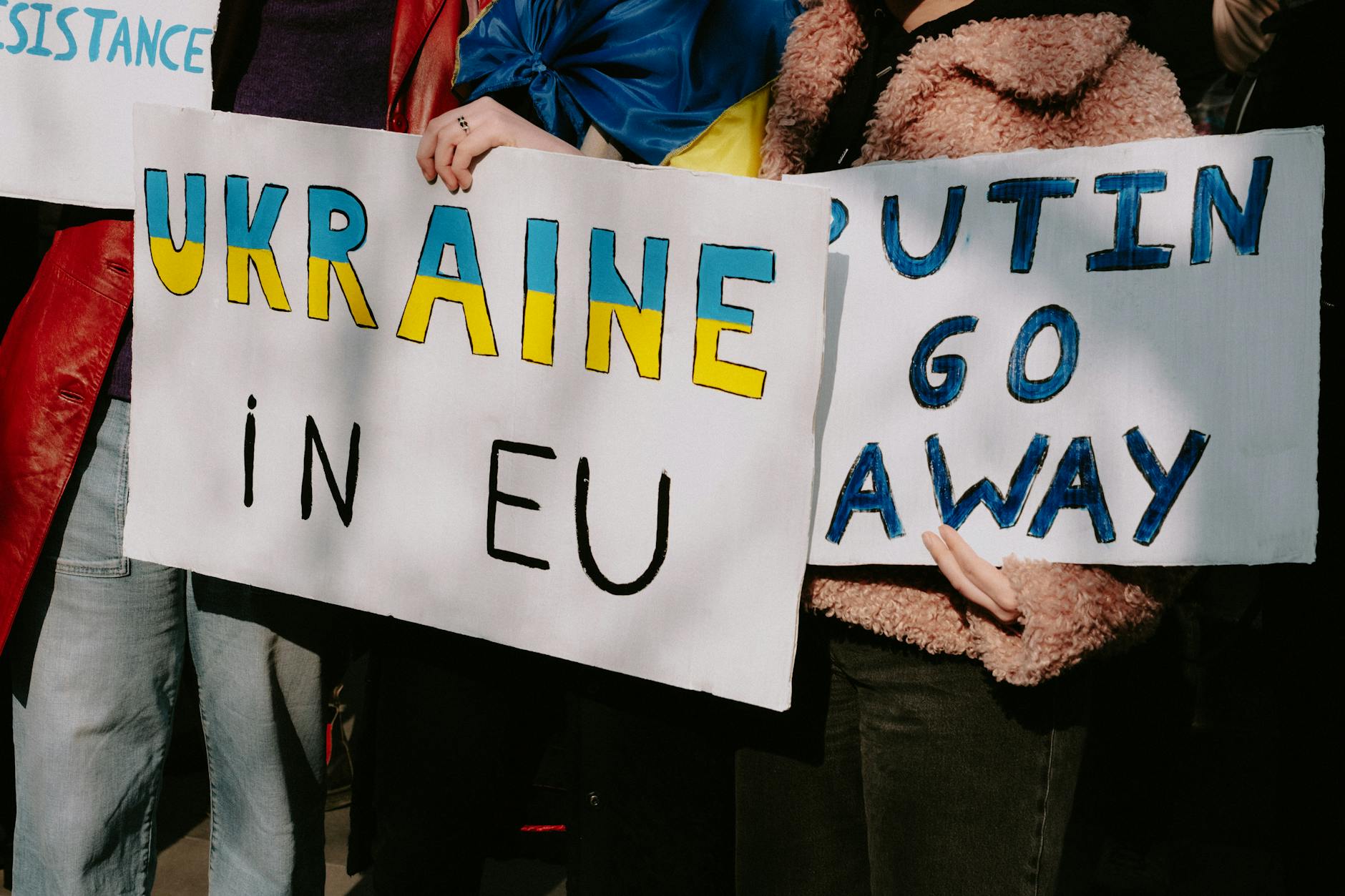The Silent Fury: How a Warming Planet Fuels the Ferocity of Hurricanes
Hurricane Erin’s Rapid Reinforcement Signals a Shifting Storm Landscape
The recent resurgence of Hurricane Erin, transforming from a weakened system into a Category 4 “behemoth” over a single weekend, serves as a stark and timely illustration of a phenomenon scientists have been warning about for years: the increasing propensity of tropical cyclones to undergo rapid intensification. This dramatic shift in Erin’s power, mirroring a trend observed in other recent storms, points towards a critical connection between a warming planet and the escalating threat posed by these colossal weather events. As the world grapples with the multifaceted impacts of climate change, understanding how these storms are evolving is paramount to safeguarding coastal communities and preparing for an uncertain future.
The term “rapid intensification” in meteorology refers to a significant increase in a hurricane’s wind speed over a short period. While hurricanes have always been dynamic systems, capable of fluctuating in strength, the frequency and intensity of these rapid transformations appear to be on the rise. This escalating power, fueled by warmer ocean waters – the primary energy source for hurricanes – presents a more formidable challenge for forecasters and a greater danger to those in their path. The erratic behavior of storms like Erin underscores the need for a deeper understanding of the underlying atmospheric and oceanic processes at play and for more robust strategies to adapt to this evolving threat.
This article will delve into the science behind this concerning trend, examining the factors that contribute to rapid intensification, the specific characteristics of Hurricane Erin’s recent behavior, and the broader implications for climate science and disaster preparedness. We will explore the historical context of hurricane intensity, the current scientific consensus on the link between climate change and storm intensification, and the challenges and opportunities that lie ahead in mitigating the risks associated with these increasingly powerful weather systems.
Context & Background
Hurricanes, typhoons, and tropical cyclones are all names for the same phenomenon: powerful rotating storm systems that form over warm ocean waters. They are characterized by a low-pressure center, strong winds, and heavy rainfall, capable of causing widespread destruction through storm surge, high winds, and inland flooding. The formation and intensity of these storms are heavily influenced by a complex interplay of atmospheric and oceanic conditions.
The foundational requirement for a hurricane to form is warm ocean water. Specifically, sea surface temperatures of at least 26.5 degrees Celsius (80 degrees Fahrenheit) extending down to a depth of at least 50 meters are generally needed to provide the necessary heat and moisture to fuel the storm. As warm, moist air rises, it cools and condenses, releasing latent heat, which further warms the surrounding air and intensifies the upward motion, creating a self-sustaining cycle. The Earth’s rotation, through the Coriolis effect, then imbues the developing storm with its characteristic spin.
Historically, meteorologists have relied on a variety of metrics to track and categorize hurricane intensity, most notably the Saffir-Simpson Hurricane Wind Scale. This scale classifies hurricanes from Category 1 to Category 5 based on their sustained wind speeds. Category 1 storms have winds of 74-95 mph, while Category 5 storms, the most intense, boast winds of 157 mph or higher. While this scale remains a crucial tool, the increasing occurrence of rapid intensification events highlights the limitations of a static classification system in capturing the dynamic nature of modern hurricanes.
The concept of rapid intensification is not new, but observational data and modeling capabilities have improved significantly over the past few decades, allowing scientists to better identify and understand these events. For instance, the National Hurricane Center (NHC) defines rapid intensification as an increase in a tropical cyclone’s maximum sustained winds of 35 knots (approximately 40 mph) or more in a 24-hour period. Prior to the widespread availability of advanced reconnaissance aircraft and satellite imagery, pinpointing the exact onset and progression of such rapid changes was considerably more challenging.
Understanding the historical context is crucial. While dramatic shifts in hurricane intensity have always been part of their nature, the observed increase in the frequency and intensity of rapid intensification events is a cause for concern among climate scientists. This trend aligns with broader projections regarding the impacts of anthropogenic climate change on weather systems worldwide. The warming of the planet’s oceans, a direct consequence of increased greenhouse gas concentrations in the atmosphere, is widely recognized as a primary driver behind these changes.
The scientific community has been actively researching the link between climate change and tropical cyclone activity for decades. Numerous studies have explored how rising sea surface temperatures, increased atmospheric moisture, and changes in wind shear patterns might influence hurricane formation, intensity, and rainfall. The consensus among leading scientific bodies, such as the Intergovernmental Panel on Climate Change (IPCC), is that while the total number of tropical cyclones might not necessarily increase globally, the proportion of the most intense storms is likely to rise, and the frequency of rapid intensification events is also expected to climb. This is a critical distinction, as a smaller number of more intense storms can still have devastating impacts.
The connection is rooted in basic thermodynamics. Warmer ocean waters provide more energy for hurricanes to tap into. As the planet warms, these higher temperatures become more prevalent and persist for longer periods, creating more favorable conditions for storms to strengthen rapidly. Furthermore, a warmer atmosphere can hold more moisture, leading to heavier rainfall associated with these intensified storms, exacerbating flooding risks.
The recent performance of Hurricane Erin, as reported, serves as a compelling case study. Its ability to rebound and escalate to Category 4 status within a short timeframe illustrates the potent capacity of current climate conditions to fuel such dramatic changes. This underscores the urgent need to integrate our understanding of climate-driven changes into hurricane forecasting, preparedness, and long-term coastal adaptation strategies.
In-Depth Analysis
The phenomenon of rapid intensification in hurricanes is driven by a complex interplay of atmospheric and oceanic factors, many of which are being influenced by a warming climate. To understand how storms like Erin are becoming more volatile, we need to examine these key drivers in detail.
1. Ocean Heat Content: The Fuel for Intensification
As previously mentioned, warm ocean waters are the lifeblood of hurricanes. However, it’s not just the surface temperature that matters; the “ocean heat content” – the amount of heat stored in the upper layers of the ocean – plays a crucial role in sustaining and intensifying storms. Climate change is demonstrably increasing ocean heat content globally. Oceans have absorbed over 90% of the excess heat trapped by greenhouse gases since the 1970s. This stored heat acts like a supercharger for hurricanes, providing a deep reservoir of energy that can fuel rapid intensification. When a storm encounters areas of particularly high ocean heat content, it can absorb this energy much more efficiently, leading to a swift and dramatic increase in wind speed and overall intensity.
NOAA’s explanation of Ocean Heat Content provides further insight into this critical climate indicator.
2. Vertical Wind Shear: A Destabilizing Force (and its Changing Role)
Vertical wind shear, the change in wind speed and direction with height in the atmosphere, is typically a force that disrupts hurricanes. High wind shear can tilt a storm’s structure, tear apart its eyewall, and inhibit intensification. However, the impact of wind shear on rapid intensification is nuanced. In some instances, a temporary decrease in vertical wind shear can create an environment conducive to rapid intensification. Climate change’s impact on wind shear patterns is complex and can vary by region, but some models suggest shifts that could, in certain scenarios, allow for periods of reduced shear, thereby creating windows for rapid strengthening.
3. Intra-storm Structure and Dynamics: Eyewall Replacement Cycles and Convective Inflows
Even within a storm, there are internal processes that contribute to intensity fluctuations. Eyewall replacement cycles, where an outer eyewall forms and constricts the inner eyewall, can temporarily weaken a storm. However, the ability of a storm to quickly overcome these internal disruptions and re-establish a strong, symmetrical eyewall is enhanced by favorable environmental conditions, including warm waters and low shear. Additionally, the efficiency of the storm’s “convective inflows” – the supply of warm, moist air feeding the storm’s core – is directly influenced by the underlying ocean conditions.
4. Atmospheric Moisture and Instability: The Vertical Dimension
A warmer atmosphere holds more moisture. This increased moisture availability can enhance the latent heat release during condensation within the storm’s clouds, providing additional energy. Furthermore, warmer sea surface temperatures can lead to greater atmospheric instability, meaning air parcels become warmer and less dense than their surroundings as they rise, fueling stronger updrafts and more vigorous thunderstorms within the hurricane. This increased moisture and instability can directly contribute to rapid intensification by making the storm’s convective engine more powerful.
5. The Role of the Ocean’s “Warm Water Blob” and Heat Content Anomalies
The concept of “warm water blobs” or regions of anomalously warm ocean temperatures is particularly relevant. When a hurricane encounters such a region, it can experience a significant boost in intensity. Climate change is contributing to the expansion and persistence of these warmer-than-average ocean areas, creating more frequent and widespread opportunities for rapid intensification. Hurricane Erin’s journey over such conditions would explain its dramatic recovery and strengthening.
6. Observational Challenges and the “Black Swan” Event Argument
It’s important to acknowledge that predicting rapid intensification remains a significant challenge for meteorologists. These events can sometimes occur with little warning, making them akin to “black swan” events in terms of their unpredictability. However, the increasing frequency of such events suggests they are becoming less “black swan” and more a predictable, albeit still challenging, characteristic of a changing climate. Advances in satellite technology, such as microwave sensors that can penetrate clouds, and improved reconnaissance aircraft data are helping to refine our understanding and forecasting of these rapid changes.
The case of Hurricane Erin, as described in the summary, exemplifies these principles. Its ability to “strengthened back into a Category 4 behemoth over the weekend” points to an environment that was highly conducive to rapid intensification, likely due to sustained access to exceptionally warm ocean waters and potentially favorable atmospheric conditions that allowed it to overcome any internal structural weaknesses or moderate environmental influences.
NOAA’s Atlantic Oceanographic and Meteorological Laboratory (AOML) conducts extensive research into hurricane intensification, providing valuable data and analysis.
Pros and Cons
The increasing propensity of hurricanes to undergo rapid intensification presents a complex set of challenges and, in some indirect ways, could be argued to offer certain limited “pros” or aspects that highlight existing scientific strengths. However, it is crucial to frame these “pros” carefully, as the overwhelming impact of more intense storms is negative.
Pros (or aspects that highlight scientific understanding/response):
- Enhanced Scientific Scrutiny and Model Development: The observed trend of rapid intensification has spurred significant investment and focus within the meteorological community. This has led to improved observational techniques (e.g., advanced satellite data, better reconnaissance flight patterns) and a drive to refine numerical weather prediction models to better capture these rapid changes. The need to forecast these events accurately pushes the boundaries of scientific understanding.
- Increased Awareness and Preparedness Efforts: The dramatic nature of rapid intensification events, like that of Hurricane Erin, captures public and governmental attention, leading to a greater emphasis on hurricane preparedness. This can translate into improved evacuation plans, more resilient infrastructure, and enhanced community outreach efforts, all of which are crucial for mitigating disaster impacts.
- Opportunity for Data Collection and Analysis: Each instance of rapid intensification provides valuable data for scientists to analyze. Studying storms like Erin allows researchers to better understand the specific environmental conditions that trigger these events, leading to more accurate diagnostic and prognostic capabilities for future storms.
Cons (the overwhelming negative impacts):
- Forecasting Challenges and Lead Time Reduction: The most significant “con” is the reduced lead time for warnings. When a storm intensifies rapidly, forecasts can quickly become outdated, leaving communities with less time to prepare, evacuate, and secure property. This can lead to higher casualty rates and greater economic losses.
- Increased Intensity and Destructive Potential: Stronger winds mean more damage to buildings and infrastructure. Rapid intensification can quickly push a storm into higher Saffir-Simpson categories, transforming a manageable threat into a catastrophic one.
- Amplified Storm Surge: Higher wind speeds drive more powerful storm surges. Rapid intensification can therefore lead to more destructive and far-reaching inundation of coastal areas, posing a severe threat to life and property.
- Heavier Rainfall and Inland Flooding: Intensified hurricanes often carry more moisture, leading to greater rainfall amounts. Rapid intensification can exacerbate this, increasing the risk of severe inland flooding, which can affect communities far from the coast.
- Economic Disruption: The increased destructive potential translates into greater economic impacts, including damage to homes, businesses, and critical infrastructure, as well as disruptions to industries like tourism and agriculture. The cost of recovery and rebuilding can be immense.
- Uncertainty in Climate Models: While the general trend is understood, the precise mechanisms and regional variations in rapid intensification due to climate change are still areas of active research. This uncertainty can make long-term planning and policy development more challenging.
- Psychological Impact and Anxiety: The unpredictable nature of rapid intensification can create significant anxiety and stress for coastal populations, who may face the sudden prospect of a devastating storm with little warning.
The National Hurricane Center (NHC) is the primary authority for issuing hurricane warnings and forecasts in the Atlantic and Eastern Pacific basins. Their official website provides up-to-date information and advisories.
Key Takeaways
- Climate Change Fuels Storm Ferocity: A warming planet, particularly through increased ocean heat content, provides more energy for hurricanes, increasing their potential for rapid intensification.
- Rapid Intensification is a Growing Concern: Storms are demonstrating an increased ability to strengthen significantly in very short periods (e.g., 35 knots or more in 24 hours), making them more dangerous and harder to forecast.
- Hurricane Erin as a Case Study: The storm’s swift transition back to a Category 4 status exemplifies the real-world impact of these climate-driven changes on hurricane behavior.
- Reduced Warning Times are Critical: Rapid intensification significantly shortens the lead time for warnings, leaving communities with less time to prepare for and evacuate from potentially catastrophic storms.
- Multiple Factors Contribute: Beyond ocean warmth, changes in atmospheric moisture, instability, and wind shear patterns (though complex) also play a role in these rapid strengthening events.
- Scientific Understanding is Evolving: The increasing frequency of rapid intensification is driving advancements in meteorological forecasting and climate modeling, though significant challenges remain.
- Preparedness is Paramount: The trend necessitates a renewed focus on robust disaster preparedness, resilient infrastructure, and effective communication strategies for coastal populations.
- Broader Impacts are Significant: Increased storm intensity leads to amplified storm surge, heavier rainfall, greater inland flooding, and more severe economic disruption.
Future Outlook
The trajectory of climate change suggests that the conditions conducive to rapid intensification of hurricanes are likely to persist and potentially intensify in the coming decades. Scientific projections, largely supported by advancements in climate modeling and observational data analysis, point towards a future where the most intense tropical cyclones become more frequent, and the instances of rapid strengthening become more common.
Specifically, several trends are anticipated:
- Continued Warming of Ocean Waters: As global temperatures continue to rise due to ongoing greenhouse gas emissions, the ocean’s capacity to store heat will likely increase. This will provide a more robust and persistent energy source for hurricanes, making them more susceptible to rapid intensification. Regions that have historically been less prone to extreme storm behavior may see an increased risk.
- Increased Atmospheric Moisture: A warmer atmosphere’s capacity to hold more water vapor means that future hurricanes are likely to produce even heavier rainfall, exacerbating the risk of catastrophic inland flooding.
- Changes in Wind Shear Patterns: While the precise impact of climate change on wind shear is complex and varies by region, some models suggest potential shifts that could create more favorable windows for rapid intensification in certain areas. The interplay between tropical cyclone development and large-scale atmospheric circulation patterns is an active area of research.
- Potential for Stronger Storms Overall: The combination of these factors suggests that the upper limit of hurricane intensity could be pushed higher. Even if the total number of storms doesn’t increase dramatically, the proportion of very intense storms (Category 4 and 5) is projected to rise.
- Evolution of Forecasting: Meteorologists will continue to refine forecasting techniques. This includes improving the assimilation of satellite and aircraft data, developing more sophisticated atmospheric and oceanic models, and potentially incorporating artificial intelligence and machine learning to better identify the precursors to rapid intensification. However, the inherent chaotic nature of atmospheric systems will always present a challenge.
- Adaptation and Resilience as Essential Strategies: Given the projected trends, a significant focus will need to be placed on adaptation and resilience measures. This includes updating building codes to withstand higher wind speeds and greater storm surge, developing more effective evacuation plans, protecting and restoring natural coastal defenses like wetlands and mangroves, and improving early warning systems.
- The Need for Global Climate Action: Ultimately, the most effective long-term strategy to mitigate the escalating threat of rapidly intensifying storms lies in global efforts to reduce greenhouse gas emissions and limit the extent of future climate change. The Paris Agreement aims to achieve this by limiting global warming to well below 2, preferably to 1.5 degrees Celsius, compared to pre-industrial levels.
The future outlook is not one of inevitability, but rather one of escalating challenge that demands proactive and informed responses. Understanding the science, investing in better prediction, and implementing robust adaptation strategies are critical steps in navigating the evolving landscape of tropical cyclone activity.
Call to Action
The increasing frequency and intensity of rapidly intensifying storms, exemplified by events like Hurricane Erin, serve as a critical warning sign from our planet. This is not merely a scientific curiosity; it is a pressing issue that demands immediate and sustained attention from individuals, communities, and governments worldwide.
For Individuals:
- Stay Informed: Regularly check official sources like the National Hurricane Center (NHC) for the latest advisories and forecasts during hurricane season. Understand the Saffir-Simpson scale and what rapid intensification means for storm behavior.
- Develop a Hurricane Plan: Create and practice a family hurricane preparedness plan that includes evacuation routes, communication strategies, and essential supplies. FEMA’s hurricane preparedness resources offer comprehensive guidance.
- Strengthen Your Home: Take steps to make your home more resilient to high winds and potential flooding. This might include securing windows and doors, trimming trees, and elevating critical appliances.
- Support Resilience Efforts: Advocate for and participate in community-level initiatives focused on climate adaptation and disaster preparedness.
For Communities and Local Governments:
- Enhance Evacuation Planning: Ensure that evacuation plans are up-to-date, account for reduced warning times due to rapid intensification, and are communicated effectively to all residents, especially vulnerable populations.
- Invest in Resilient Infrastructure: Prioritize investments in infrastructure that can withstand more extreme weather events, including upgraded drainage systems, reinforced sea walls, and hardened power grids.
- Promote Nature-Based Solutions: Invest in the restoration and protection of natural coastal defenses such as mangroves, coral reefs, and wetlands, which can significantly reduce the impact of storm surge.
- Improve Early Warning Systems: Collaborate with meteorological agencies to ensure that early warning systems are robust, utilize the latest scientific data, and reach all segments of the population effectively.
For National Governments and Policymakers:
- Prioritize Climate Change Mitigation: Implement ambitious policies to reduce greenhouse gas emissions, aligning with or exceeding the goals of the Paris Agreement. This is the most critical long-term action to curb the underlying drivers of intensifying storms.
- Increase Funding for Climate Science and Forecasting: Support ongoing research into hurricane dynamics, climate modeling, and the impacts of climate change on extreme weather events. Invest in advanced observational tools and computing power for improved forecasting. The NASA Climate portal offers insights into the scientific basis for these actions.
- Invest in Adaptation and Resilience: Allocate significant resources towards building resilient infrastructure, supporting community adaptation plans, and providing aid for post-disaster recovery and rebuilding efforts that incorporate future climate risks.
- Foster International Cooperation: Climate change and its impacts are global issues. Strengthen international collaboration on climate research, disaster management, and the implementation of climate mitigation strategies. The Intergovernmental Panel on Climate Change (IPCC) reports provide comprehensive assessments of climate science and policy recommendations.
The challenge of rapidly intensifying storms is a clear manifestation of a planet undergoing significant climatic shifts. By taking decisive action now, at every level, we can build a more resilient future and mitigate the devastating consequences of these powerful forces of nature.



